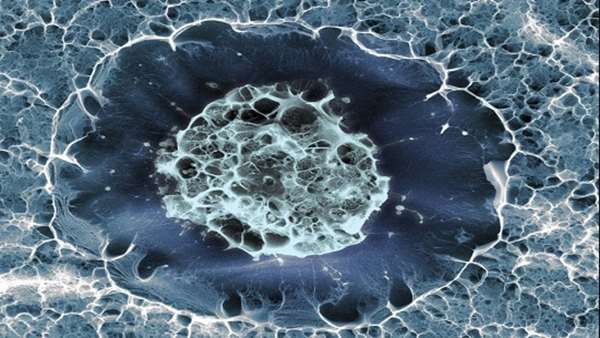Algorithm Devised for Reprogramming One Type of Cell into Any Other
Scientists in the U.S. have developed an algorithm that can predict the optimum method for transforming any cell type directly into any other specified cell type, without the need to generate induced pluripotent stem cells (iPSCs) as intermediates
Scientists in the U.S. have developed an algorithm that can predict the optimum method for transforming any cell type directly into any other specified cell type, without the need to generate induced pluripotent stem cells (iPSCs) as intermediates. The cell transformation algorithm is based on a mathematical control model, which the researchers have dubbed data-guided control (DGC). It exploits the wealth of data that we already have on cellular activity, genome structure, and gene expression and regulation to predict which transcription factors to apply, and when in the cell cycle. The researchers, at the University of Michigan, the University of Maryland, and Harvard University, suggest that the work could represent a framework for cell reprogramming in areas including regenerative medicine and cancer treatment.
"Cells in our body naturally specialize," notes Indika Rajapakse, Ph.D., a University of Michigan (U-M) bioinformatics and mathematics researcher who is senior author of the team’s published paper in the Proceedings of the National Academy of Sciences (PNAS). "What we propose could provide a shortcut to doing the same, to help any cell become a targeted cell type." The paper, by collaborating researchers at U-M, the University of Maryland, and Harvard University, is entitled, “Algorithm for Cellular Reprogramming.”
Traditionally, the selection of transcription factors for reprogramming cells has been based "largely on trial and error, typically relying on transcription factor differential expression between cell types for initial predictions,” the researchers write. Their computationally driven approach also identifies transcription factors that have previously been found to reprogram human fibroblasts into a number of different cell types, but predicts when in the cell cycle to apply them to most efficiently trigger the desired change of cell state. The method, in addition, takes into account the concept of distance between cell types, in effect, the amount of transcriptional change needed to transform one cell type into another. “In this way, we are able to provide a comprehensive quantitative view of human cell types based on the respective distances between them,” the authors state.
Central to their algorithm development was the analysis of topologically associating domains (TADs) from Hi-C data—a method of genome-wide chromosome conformation capture that makes it possible to study higher-order chromatin structure. Hi-C allows scientists to identify the location of and contact between stretches of the chromatin that, even if separated by a linear distance, may still come into close proximity due to chromatin folding or looping. This technique led to the discovery of TADs, which are one-dimensional stretches of the genome containing genes that tend to exhibit similar activity. “TAD boundaries have been found to be largely cell-type invariant,” the authors point out.
"We have so much data now from RNA and transcription factor activity, and from Hi-C data of chromosome configuration that tells us how often two pieces of chromatin are near one another, that we believe we can go from the cells initial configuration to the desired configuration," says Rajapakse.
While the researchers have reported on how they developed the cell transformation algorithm, what they haven’t yet done is test it directly. This is something that they aim to do themselves, but they also hope that other scientists will test it in laboratories around the world. U-M has, meanwhile, filed for a patent on the algorithm.
“The successful implementation of time-varying reprogramming regimes would open unique avenues for direct reprogramming,” the authors comment in their PNAS paper. “This template can be used to develop regimes for changing any cell into any other cell, for applications that include reprogramming cancer cells and controlling the immune system. Our DGC framework is well equipped for designing personalized cellular reprogramming regimes.”
One of the U-M labs that will be testing the cell transformation instructions is that of co-author Max Wicha, M.D., the Forbes Professor of Oncology at Michigan Medicine, U-Ms academic medical center, and former director of the U-M Comprehensive Cancer Center. “This algorithm provides a blueprint that has important implications for cancer, in that we think cancer stem cells may arise from normal stem cells via similar reprogramming pathways," he states. "This work also has important implications for regenerative medicine and tissue engineering, since it provides a blueprint for generating any desired cell type It also demonstrates the beauty of combining mathematics and biology to unravel the mysteries of nature."
The team also suggests that their method could represent a general technique for investigating the controllability of networks strictly from data. “Our findings highlight the immense potential of dynamical models, mathematics, and data-guided methodologies for improving strategies for control over biological processes.





ارسال به دوستان